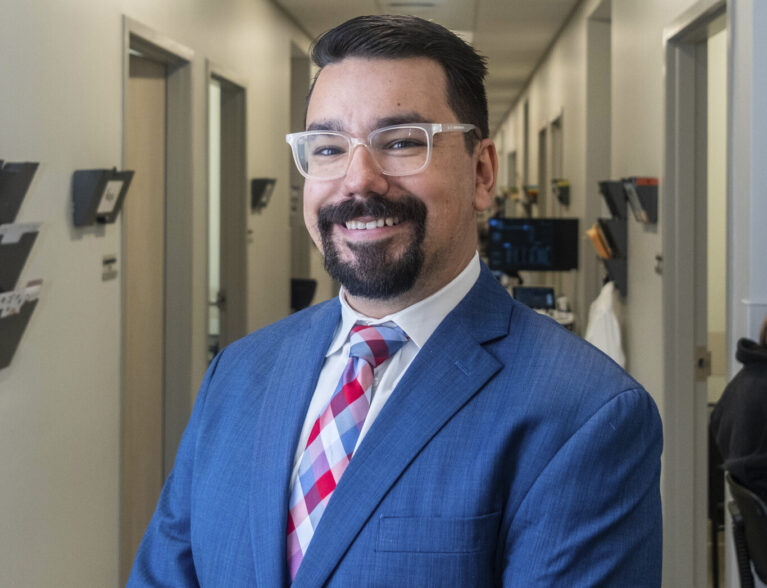
Have you noticed that opening jars, buttoning shirts, or even holding a pan has become more cumbersome or painful? While it may be tempting to blame stubborn packaging or tricky buttons, the more likely culprit is hand osteoarthritis – a common condition that affects millions of people as they age. Although osteoarthritis can strike any joint, the small joints in the hand are frequent targets, making everyday tasks both painful and frustrating.
Osteoarthritis is described as “wear-and-tear” arthritis. Over time, the smooth cartilage that cushions the ends of bones breaks down, leading to swelling, stiffness and pain.
“It occurs where the cartilage on the ends of the bones articulate with each other,” explained Dr. Lazaro Mesa, orthopedic surgeon with Vero Orthopaedics. “If you look at the end of a chicken wing, that pearly white substance is the cartilage. When that surface is smooth, it allows for normal motion between the bones. But when it wears down, that’s osteoarthritis.”
Early symptoms include stiffness in the morning or after periods of inactivity, swelling around the knuckles, and a dull ache that worsens with use. Over time, bony lumps called “nodes” may form on finger joints, altering their shape and limiting dexterity.
“Any degree of stiffness is usually associated with some amount of osteoarthritis,” Dr. Mesa said. “We often refer to it as age-related stiffness. As joints degenerate, inflammation develops, and that’s what we perceive as pain and stiffness.”
Genetics, prior hand injuries and repetitive use from various jobs or hobbies can increase the risk of developing osteoarthritis. Women over the age of 50 are especially prone, particularly after menopause, when hormonal changes can play a role in joint deterioration.
“Osteoarthritis affects nearly 50 percent of men and women by age 50, and by the time they reach 70 or 80, it nearly approaches 100 percent,” Dr. Mesa said. “I tell my patients to imagine a bone with a tire on one end that wears over time. Genetics are like the brand of tire, and lifestyle is like how you drive. If you slam on the brakes or carry heavy loads, the tires wear faster. The same goes for your hands – heavy use accelerates wear and tear.”
Diagnosis is often straightforward, since even small deformities in the hands are easy to detect. X-rays help determine the severity of the disease and guide treatment. Sometimes osteoarthritis affects isolated areas, such as the base of the thumb, while in other cases it follows patterns, especially in patients with other forms of arthritis like rheumatoid or psoriatic arthritis.
The basal joints of the thumb and the finger joints that provide flexion toward the palm are especially vulnerable. When the joints nearest the fingertips are affected, patients may also experience cosmetic concerns from nodules that form around the tips of the fingers.
“Luckily, osteoarthritis is not cancer and it’s not life-threatening,” Dr. Mesa said. “But it can be life changing. Once damage begins, the disease tends to progress more quickly – like a pothole in the road that grows larger the longer it’s left unrepaired.”
Fortunately, there are numerous ways to manage the condition. Non-surgical treatments are usually the first step and may include anti-inflammatory medications, splints to support joints, hand therapy exercises, and corticosteroid injections to reduce swelling. Emerging biologic treatments like platelet-rich plasma (PRP) and stem cell injections are also being studied, though more research is needed.
Diet and lifestyle may also play a role. Research suggests an anti-inflammatory diet can help alleviate arthritis pain, underscoring the connection between overall health and joint health.
When conservative measures fail, surgery may be an option. Procedures range from trapeziectomy with ligament reconstruction for basal thumb arthritis, to joint fusion for stability, or joint replacement with implants to restore motion. Recovery can take several months, but many patients experience significant pain relief and improved function.
“Not all patients need treatment,” Dr. Mesa said. “Some people have X-rays that look terrible but function just fine, while others with mild arthritis experience significant pain. Everyone perceives it differently, so I leave the decision up to the patient. They’ll know when they can’t live with it any longer.”
Lifestyle adjustments can help, too. Using gripper devices to open bottles, performing hand exercises to maintain flexibility, maintaining a healthy weight, and avoiding repetitive strain all can help manage symptoms and slow progression.
While there’s no cure for osteoarthritis, understanding the condition and learning how to manage it can help patients maintain independence and quality of life. In many cases, small adjustments and proactive care can make daily tasks easier – and keep those jars, buttons and bottles from winning the battle.
Dr. Lazaro Mesa specializes in hand, elbow and shoulder orthopaedics. He received his medical education at Herbert Wertheim College of Medicine at Florida International University in Miami. He completed his orthopaedic surgery residency at the University of South Florida/Florida Orthopaedic Institute in Tampa and his Hand and Upper Extremity Fellowship at Indiana Hand to Shoulder Center in Indianapolis. He is fluent in English and Spanish. His office is located at Vero Orthopaedics, 3955 Indian River Blvd., Vero Beach. Call 772-569-2330 to schedule an appointment.



